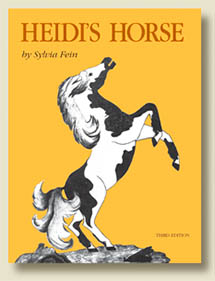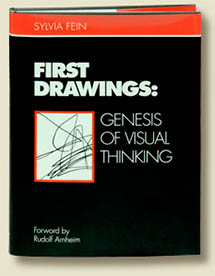
During three years that Sylvia Fein lived in the small village of Ajijic, Mexico, painting for her first solo exhibition at the Perls Galleries in New York City, she helped rebuild the adobe house in which she had her studio, taught English to a few young people eager to go to work in Mexico City, and started an embroidered blouse industry for women who owned the two foot-pedaled sewing machines in the village. In exchange for exotic insects brought to her by the children for her own drawings, she provided paper, pencils and crayons and noted thoughtfully how spontaneously the children drew, and their meticulous observation, dexterity, humor and enjoyment.
When WW2 ended and her husband Bill Scheuber returned from the South Pacific, they made their home in the San Francisco Bay area where their daughter, Heidi, was born. A renewed friendship with a Wisconsin University friend, the dancer Anna Halprin, led her to The Institute of Art Education in Berkeley and its Director, Professor Henry Schaefer-Simmern who had described and analyzed childrenís untutored drawings in his book The Unfolding of Artistic Activity. Fein made hundreds of ink drawings of artifacts for his posthumously published book Consciousness of Artistic Form (2003). This long collegial relationship and her annotation of her daughter Heidiís love affair with horses and drawings resulted in Fein writing her own two books: Heidi’s Horse and First Drawings: Genesis of Visual Thinking.
Both these titles will soon be available for online ordering through links on this web page. Please follow the links below to read full descriptions and reviews on each of these titles.
Read more about Heidi’s Horse by Sylvia Fein
Read more about First Drawings: Genesis of Visual Thinking by Sylvia Fein

